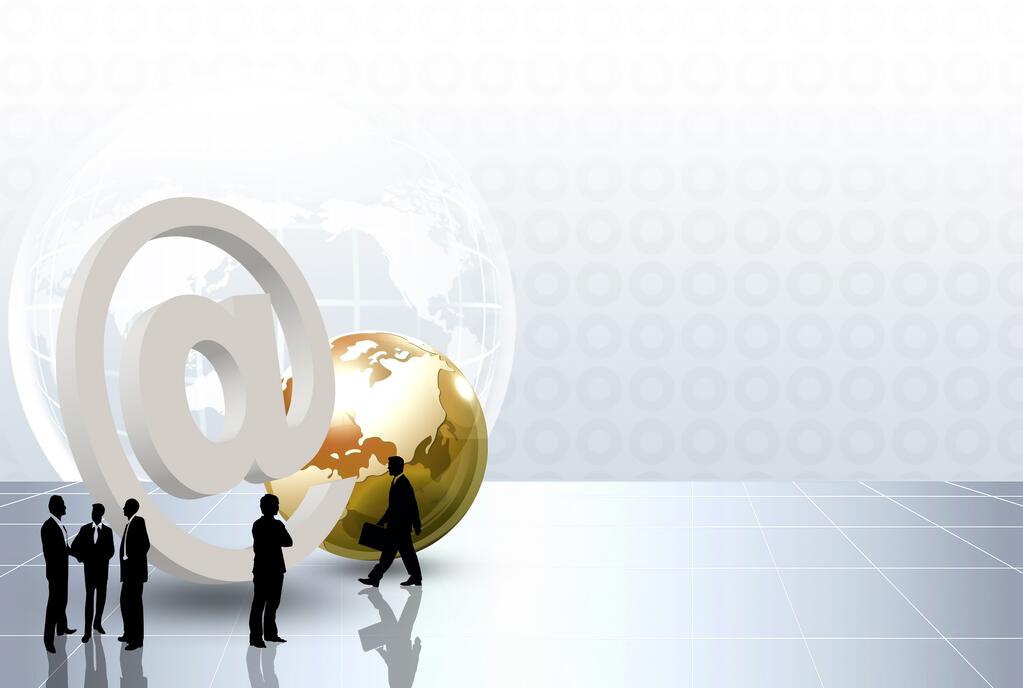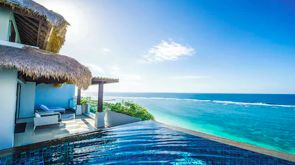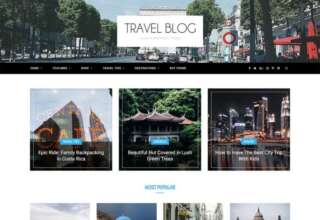
Earlier this week, Richard Branson’s Virgin Galactic made waves when it became the first commercial human spaceflight company to trade on a stock exchange. With space tourism long considered a futuristic pipe dream, this move signals new confidence among investors in the industry’s long term viability. Shortly after the IPO, NASA made announcements regarding Boeing’s and SpaceX’s upcoming Commercial Crew capsule abort tests, which represent important technical milestones towards achieving commercial orbital spaceflight. All the while, the International Space Station (ISS) has continued with business as usual, with the first all-female space walk occurring just 2 weeks ago.
With so many options for human spaceflight now on the table, how should an aspiring astronaut plan on getting to space in 2019? The answer to this question is less straightforward than it was several years ago, and is influenced by many factors including the aspirant’s age, health, work experience, affluence and personal goals. Below is a breakdown of the currently available options.
1. Astronaut Corps

CAPE CANAVERAL, FL – JULY 08: (L-R) Space shuttle Atlantis STS-135 pilot Douglas Hurley, mission … [+]
GETTY IMAGES
The most storied path to space has traditionally been through the government. NASA and Russia’s ROSCOSMOS have both been sending humans to orbit since 1961, and in recent decades many other countries have started their own space agencies and astronaut programs. All national space agencies provide a comprehensive training program to those lucky enough to be selected as astronaut candidates. The astronaut candidates (nicknamed “ASCANs” by NASA) are hired into the government as civil servants for the duration of their astronaut careers, and each of them must pass their space agency’s official training program to be eligible for flight.
The ultimate destination of a government astronaut varies according to both their agency’s capabilities and their country’s national priorities: NASA astronauts during the Apollo program of the 1960s and 1970s traveled to the moon, whereas astronauts in 2019 travel exclusively to the ISS. Astronauts are hired not only to be passengers onboard a spacecraft, but to execute missions that advance human knowledge of the universe. In contrast with space tourists, who visit destinations that have been frequented by dozens of humans before them, members of the astronaut corps sign on to the possibility of being the first person to visit an asteroid, moon or planet, or to perform a critical spacewalk. With this possibility comes the inherent risk of exploring the unknown, but most astronauts will agree that the risk is worth it to them for the opportunity to influence future generations.
So how does one become a government astronaut candidate? For NASA’s astronaut corps, the recent 0.065% acceptance rate speaks for itself – the selection process is highly competitive. At this level of competition, it is impossible to guarantee anyone a spot regardless of their qualifications, but a look into the data from recent classes provides some insight into characteristics commonly sought by the selection board.
I. Education
Officially, the minimum educational requirement to become a NASA astronaut is a bachelor’s degree in a science, technology, engineering or mathematics (STEM) discipline. However, the last time an astronaut was selected for training without a graduate degree was in 2000. The last 5 classes (2000, 2004, 2009, 2013 and 2017) have included a total of 56 astronaut candidates, and among the last 4 classes, every selected astronaut candidate has held at least a master’s degree. Many hold doctorate degrees (Ph.D., M.D. or D.V.M.); the majority of civilian candidates (68%) are doctors whereas a relatively small percentage military candidates (18%) hold a doctorate. Of the 7 selected civilians who did not hold a doctorate, 2 were teachers selected as part of the Educator Mission Specialist program in 2004.

Astronaut Candidate Data, 2000-2017: Highest level of education obtained before selection.
CHART CREATED WITH VENNAGE
II. Professional Experience
All astronaut candidates selected since 2000 have had at least 1 year of professional experience before their selection to the corps. (Officially, NASA requires at least 3 years of professional experience or 1,000 hours of pilot-in-command time on a jet aircraft in order to apply, but graduate degrees can substitute for up to 2 years of experience.) By far, the most common pre-astronaut career was military officer, with academia and civilian NASA experience representing the most common careers for non-military candidates.

Astronaut Candidate data, 2000-2017: Professional Experience
CHART CREATED WITH VENNAGE.
As today’s astronauts spend the majority of their time in space performing experiments on the ISS, scientific research skills have become a commonly sought trait in the selection process. All civilian candidates selected during the last 5 classes had STEM research experience obtained either through an M.D. or Ph.D. degree or through a research and development position in industry.
III. Operational Experience
Current astronauts note that while it is not an officially stated requirement, most new candidates have obtained significant operational experience prior to selection. Since being an astronaut may require responding quickly to on-orbit emergencies or surviving in isolation under extreme conditions after an off-nominal landing, any evidence of analogous skills is an advantage in the selection process.
While many candidates obtain operational experience through the military, others have demonstrated their ability to survive in extreme environments through field research or remote expeditions. A few recent examples include drilling ice in Antarctica, participating in NASA’s underwater space analog project at Pavilion Lake, and managing remote scientific bases for the National Oceanic and Atmospheric Association (NOAA).
IV. Physical and Mental Health
In addition to the above qualifications, astronauts must exhibit a high level of both physical and mental fitness. As an official requirement for selection, NASA’s long duration astronaut physical requires applicants to demonstrate their visual acuity to be correctable to 20/20 in each eye (use of glasses is acceptable). Once an astronaut candidate is selected for training, NASA’s qualification program includes a rigorous physical conditioning requirements that must be met to gain eligibility for flight assignments. Tasks that must be completed on a regular basis include treading water for 10 minutes while wearing a 280 pound flight suit.
To gauge mental fitness, the astronaut selection process includes evaluation by medical professionals for suitability to work in confined spaces or isolated environments for extended periods of time. Applicants who are offered onsite interviews with NASA are also evaluated on their ability to work in a team, as being an astronaut requires extensive cooperation both with other astronauts and with operators supporting the mission from the ground.
V. Other Insights
Some folklore suggests that due to the nature of the job, competitive applicants to the astronaut corps must speak Russian and hold a pilot’s license prior to selection. On the contrary, astronauts have attested that neither skill is required at the time of application. Any necessary skills training is provided to selected candidates during their first few weeks on the job.
The astronaut corps does not have any official requirements regarding age. However, the requirements for the position make it a natural target for early to mid career professionals. The age range of recent classes has been 29 to 43 (at time of selection).
While this analysis focuses on the NASA selection process, the qualifications required by other space agencies are similar and the odds of being chosen are comparably low. To be selected as a government-affiliated astronaut, one must be both highly qualified and extremely lucky. Those interested in applying should look out for their space agency’s next announcement on astronaut recruitment. For the past decade, NASA has inducted a new astronaut class every 4 years (2009, 2013, and 2017). This timeline would suggest another selection in approximately 2021, though the exact date is dependent both on funding and on demand for new astronauts.
Out of pocket cost: None – selected astronaut candidates are hired as civil servants and paid a salary according to the government’s pay scale
Time in space: Average mission duration of 6 months
2. Orbital Space Tourism

LAS VEGAS, NV – FEBRUARY 4: In this handout image provided by NASA, Deputy Administrator Lori … [+]
GETTY IMAGES
Though the odds of being selected for the astronaut corps may seem daunting, aspiring spacefarers need not despair – the ISS has been open to tourists since 2001. Since then, 7 private passengers have flown to Station through trips facilitated by Space Adventures. All previous tourists completed their flight training in Russia’s Star City and flew to the ISS aboard Russian Soyuz vehicles. Flights have been priced between $20 and $25 million, plus an additional $15 million for those participating in a space walk. Space Adventures remains open to reservations, but opportunities to reserve seats have been limited in recent years, as the Soyuz has been the only vehicle servicing ISS since retirement of the Space Shuttle in 2011.
Fortunately, the rise of the commercial space industry has opened up additional pathways for human space exploration. Earlier this year, NASA announced that starting in 2020 the U.S. segment will host private passengers for stays of up to 30 days on the ISS for a fee of $35,000 per night. Of note, this cost does not include transportation to and from the ISS: These rides will be provided by commercial providers, including SpaceX and Boeing, who are currently developing orbital human spaceflight capsules under NASA’s Commercial Crew Program. This move to open up the ISS to tourism is part of a larger effort by NASA to privatize the Station, which the U.S. government is hoping to defund within the decade.
Commercial passengers who wish to visit the ISS need not fulfill the education and professional experience requirements of the astronaut corps, though they must still complete a comprehensive training program and provide evidence of physical and mental fitness for flight. Additionally, the trip will cost passengers a pretty penny: In June, CNBC pegged the price for a private ISS trip at $52 million USD.
Other commercial vendors such as Bigelow Aerospace hope to construct new venues on orbit to provide tourists with additional options. In 2016, Bigelow launched its Bigelow Expandable Activity Module (BEAM) to the ISS, where it remains to date as a technology demonstration for Bigelow’s inflatable habitat concept. By scaling this technology, Bigelow plans to launch and activate its B330 space station by as early as 2021. The B330 space station is intended to serve as a commercial alternative to the ISS, and will host both scientific missions and private tourists. Bigelow has stated that the fee for a stay on B330 will likely be in the low eight figures.
Out of pocket cost: Upwards of $50 million USD
Time in space: Up to 30 days, plus flight time (additional 4 to 6 days)
3. Suborbital Space Tourism

Participants leave the Blue Origin Space Simulator during the Amazon Re:MARS conference on robotics … [+]
AFP VIA GETTY IMAGES
For tourists seeking a lower price point, several companies have set out to offer shorter duration “hops” into space. Built with commercial passengers in mind, Virgin Galactic’s SpaceShipTwo and Blue Origin’s New Shepard are slated to begin suborbital tourist flights starting as early as 2020. These flights do not achieve orbital velocity (suborbital flights achieve a maximum speed of around 3,500 kph, whereas orbital insertion requires 27,000 kph) and thus cannot carry passengers to orbital destinations, but still provide passengers with several minutes of microgravity during flight. Flights on these vehicles will last approximately 2.5 hours, and will be both launched and recovered from the vehicle’s spaceport in North America. Both companies have said that their flights will cary a price tag of $250,000 USD.
Of the 2.5 hour flight time, how many minutes are spent in space? It turns out, the answer to this is not straightforward, as it depends on the definition of “space.” The World Air Sports Federation (FAI) defines the Karman line, which represents the boundary between Earth and space, as 100 kilometers above the Earth’s mean sea level. While the FAI is the body responsible for setting international standards in aeronautics and astronautics, the U.S. government defines space according a different standard, with NASA and the Federal Aviation Administration (FAA) setting the boundary at 50 miles (80 km). Earlier this year, Jeff Bezos noted that this distinction may be important to potential customers who wish to obtain astronaut wings: SpaceShipTwo has yet to cross the 100 km mark with cargo or humans on board, whereas New Shepard has consistently achieved this altitude during its uncrewed cargo flights. Both vehicles have consistently achieved the U.S. government’s standard of 80 km.
Passengers wishing to fly on either vehicle may pre-order tickets directly through the operating company. While each company maintains medical requirements for its passengers for safety reasons, these requirements are likely to be less stringent than those required for ISS tourism as the forces experienced during a suborbital launch and landing are much more benign than those seen during orbital flight. A 2014 medical study commissioned by Virgin Galactic concluded that suborbital human spaceflight was safe for the vast majority of people, even if they suffer from chronic medical conditions.
Out of pocket cost: $250,000 USD
Time in space: 0 to 7 minutes
4. Parabolic Flight

‘N Sync singer and prospective space tourist Lance Bass (C) joins Space Adventures on one of its … [+]
GETTY IMAGES
Technically this option won’t get you into space, since parabolic flights are conducted using commercial aircraft that never actually leave the Earth’s atmosphere. However, parabolic flight participants do experience up to 25 seconds at a time of weightlessness, which provides a small taste of what it’s like to leave the planet.
To create a reduced gravity environment, the aircraft used for these flights follow a parabolic flight path relative to the center of the Earth. At the top of the parabola, the plane and its passengers are in free fall, which simulates the sensation of weightlessness. These flights have been used by NASA since 1957 as part of the official astronaut training program. Though the physical requirements for participation are no different from the requirements for boarding a commercial airplane, the aircraft used for parabolic flights have been nicknamed the “vomit comet” due to their long history of inducing nausea in passengers and should be approached with caution by anyone with a propensity for motion sickness.

Stages of parabolic flight.
5W INFOGRAPHICS (SOURCE: LABORATORY FOR SPACE AND MICROGRAVITY RESEARCH)
Parabolic flights are available to scientific researchers whose experiments have been accepted into government-funded grant programs such as NASA’s Flight Opportunities Program or the European Space Agency’s annual parabolic flight campaign. Paying customers also have the option to purchase flights from commercial providers such as Zero-G Corporation. Tourists can expect to pay at least $5,000 USD per seat on a shared flight, or up to $180,000 to rent out an entire aircraft for a private experience.
Out of pocket cost: $0 to $180,000 USD
Time in space: None, but up to 6 minutes total of weightlessness per flight
In conclusion: If one hopes to make a giant leap for (wo)mankind, joining the astronaut corps is probably still their best bet. But for those seeking a slightly less risky, albeit pricey opportunity to explore the cosmos, there are plenty of other options available.
[“source=forbes”]















